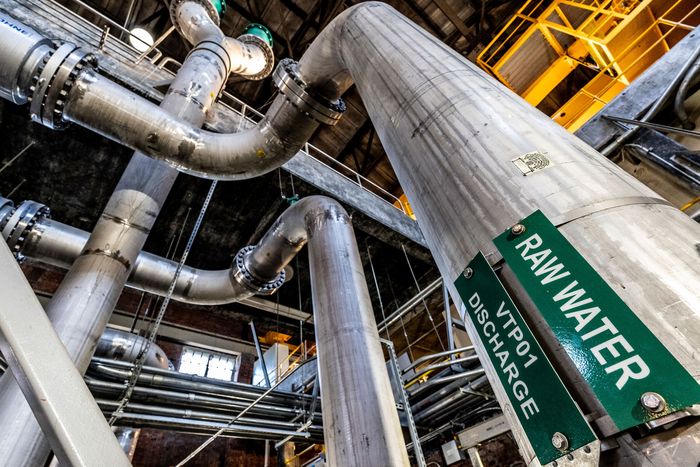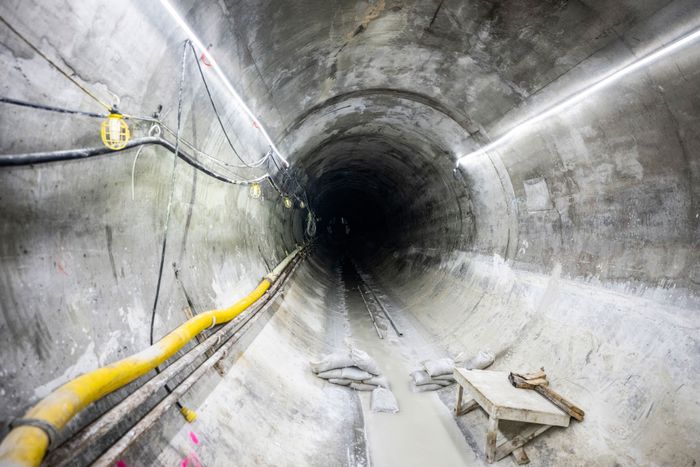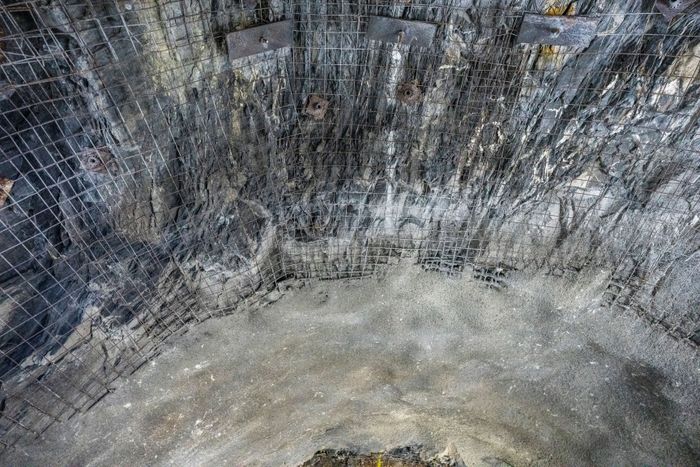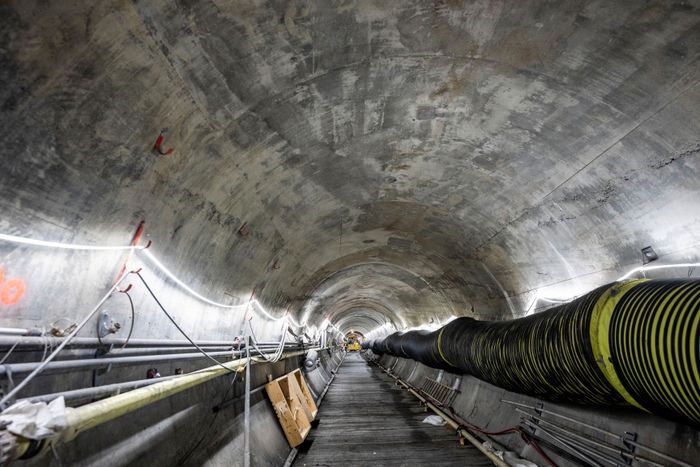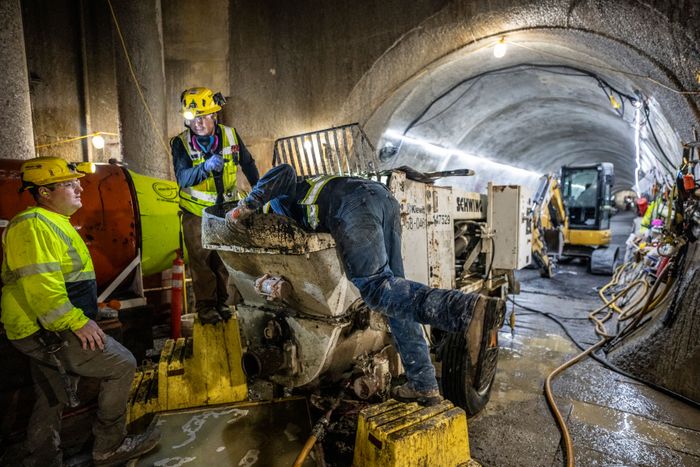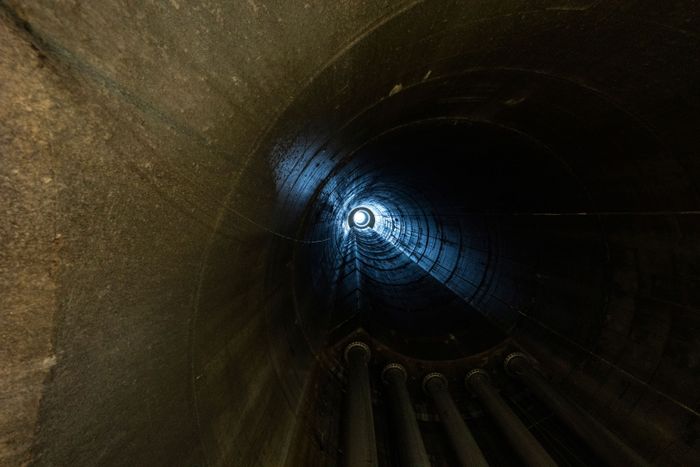World
The World’s Largest Plumbing Repair

Inside the tunnel, the rough surface is concrete sprayed over a steel liner.
Photo: Mark Peterson
The Delaware Aqueduct, 85 miles end to end, is the longest tunnel in the world. It invisibly brings about half of New York City’s water, just over 500 million gallons per day, down from the Catskills to a holding basin in Yonkers. It’s about as old as Joe Biden, and it has not been drained for repairs since he was in high school. The stretch where it crosses under the river (from Newburgh to Wappinger) passes through crumbly limestone, and it has been leaking for decades, now losing up to 35 million gallons of water daily. The best solution has been, as with many aging circulatory systems, bypass surgery. Getting down there required digging a pair of holes, 900 and 700 feet deep, then boring two and a half miles across to connect them. Two billion dollars and a decade later, that new tunnel is ready to connect to the old, and that means shutting the aqueduct off for eight months. Even just draining it so work can begin is a huge job. This summer, there were practice “dewatering events,” as the Department of Environmental Protection calls them. It’s a winter project because we use less water then.
We will not, in the interim, go dry. Our system has some redundancy, and its fallbacks include the older Croton watershed, which normally delivers 10 percent or so of our supply but can and will do more. The Times noted that its water tastes a little different, partly because it’s closer to suburbia and picks up a hint of parking lot avec Turf Builder.
Crews have begun blasting the short connecting tunnels linking the new with the old, but they can’t finish the connection till the old tunnel is fully dry. Mark Peterson, who photographed this scene for us, entered and exited on the Wappinger side in the early evening. “At night,” he says, “you could see this haze drifting out of the shaft, and they said it was fog. It’s cold down there.”
Huge pipes will soon drain the aqueduct so the bypass can be connected.
Photo: Mark Peterson
It’s two and a half miles long.
Photo: Mark Peterson
Photo: Mark Peterson
A steel sleeve lines the tunnel, and its inner surface is layered with rebar and sprayed-on concrete.
Photo: Mark Peterson
LED rope lighting illuminates the tunnel for now.
Photo: Mark Peterson
At the bottom of the shaft tunnel, about 900 feet down.
Photo: Mark Peterson
In the elevator cage, looking back up to the surface.
Photo: Mark Peterson

